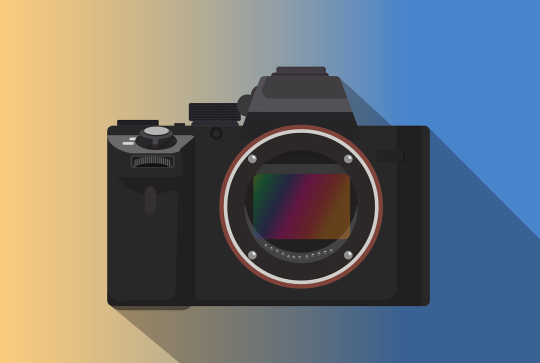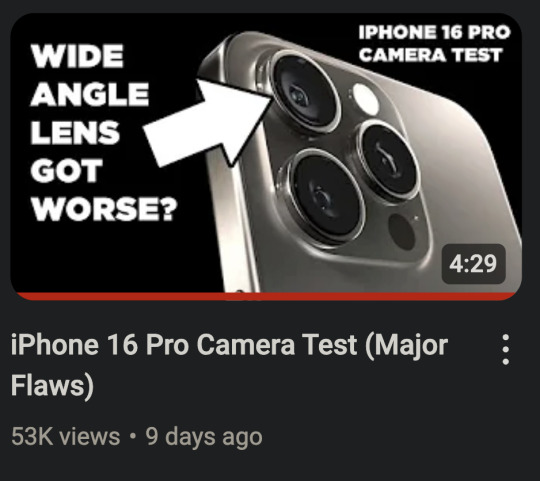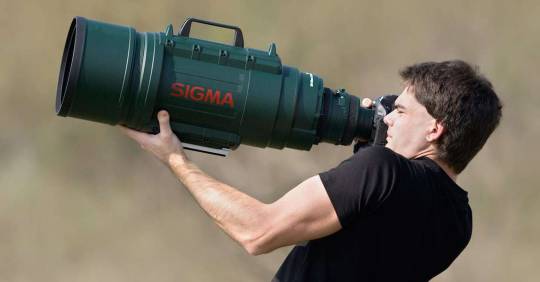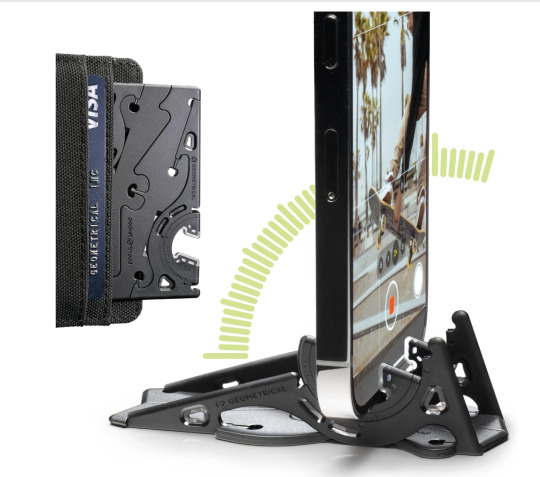#sensor size
Explore tagged Tumblr posts
Text
Digital Camera Sensor Size Chart - Design Reviews
0 notes
Text
Mastering Pixel Binning
Introduction to Pixel Binning Pixel binning is a technique used in digital cameras and smartphones to improve image quality, particularly in low-light conditions. It involves combining information from multiple adjacent pixels on a camera’s sensor to create one “super pixel.” This process reduces the overall image resolution but provides several advantages, such as improved low-light performance,…

View On WordPress
#Bayer pattern#camera sensor#camera technology#computational photography#digital noise#dynamic range#high-resolution#image processing#image quality#image resolution#ISO#low-light performance#megapixels#photo editing#Photography#pixel binning#Quad Bayer#RAW format#sensor size#smartphone cameras
1 note
·
View note
Text




fellas at the park
#all my fellas#canon powershot sx240hs#obviously#these pics are crunchy as hell sorry im at aperture 6.8 on a sensor the size of my pinky nail
18 notes
·
View notes
Text

they are going to mehnahnaroo
#my art#mission to zyxx#C-53#pleck decksetter#dar mtz#ok time for some of my appearance headcanons#i was just gonna give c little dot eyes but i was goofing around with the doodle#and i was like. oh actually little light up ocular sensors that look like 👁️👁️ are kinda funny#i'm kinda trying to hit the space where the juck bot frame could conceivably have the same inner workings as the c frame#but it's got more like. idk plating and synthetic skin and stuff#i also think that ideally this type of frame is supposed to be more fully covered? with skin. less visible joints#and is supposed to have a cooler better looking face#but they got it at a discount store that sorta refurbished it juuuuuuust well enough to sell#they also mention in the show that the eyes glow and the jaw comes off#if there were any other details i forgot about them#i like tellurians to be Pretty Much Human#but I do like the pointy ears interpretation for one main reason:#i can put perfect little pointy ones on tellurians that are the Standard for good looks (rolphus etc.)#and give pleck ones that are slightly larger and a little bent. i just think that's fun#i'm also a short pleck truther and do not believe he is skinny. that man is at least midsized. actually probably just midsized#cause if he were too big he would be too cool#ohh and first time drawing the k'hekk eye yayyyy. it should probably be nastier but i can only do so much#dar i really imagine round cause it's like the classic Big Guy shape and they have no bones in their head so it can't be that structured#bodywise my design is def inspired by tikkitronictonic and snuffysbox's designs#i was at a total loss on how to interpret the talons and chutes and flaps when I was listening and this is easy and smooth#maybe the only major difference is that i imagine dar is pretty hygienic and furry scales feel like they'd be hard to keep clean#with all the uh. goings on#so i've got those across the chest and arms and then the torso is smoother in my mind#also ik dar is supposed to be like twice pleck's size but it's hard to stand these people next to each other#my brother said they made up a thing called mass shifting in transformers g1 to excuse the scale issues. so i'll do it too. get off my case
24 notes
·
View notes
Note
Not an ask, but please do infodump more in tags. I am Delighted to learn new stuff <3
Will do.
#Homebrew on the 3DS took a while.#While Flashcards like Gateway were already Possible#through a combination of two Cards#One that installs an Extremely Large String in the DS Modes Status#And another that abuses the Now compromised 3DS to run Pirates Software.#However this Exploit could not install Homebrew.#Homebrew without Hardware Modification only became Possible shortly before the New 3DS Release.#Through an Exploit named Ninjhax.#This Exploit abused an Major Vulnerability in the Terrible 3DS Game Cube Ninja.#Cube Ninja was a Game that was mostly played using the Gyro Sensors#and it included a Level Creator that would save Levels as QR-Codes that you could share.#However there was no Limit on the Size that these Levels could have.#So using an Custom QR-Code The Game generated an Ridiculously Large Level#that Compromised the Console to the Point that First Homebrew Became possible.#Cube Ninja quickly became the most sold game on the eShop#before Nintendo took it down that is.#Eventually Ninjhax became Obsolete with the discovery of easier and more powerful Exploits.#But thats a Story for another Time.
3 notes
·
View notes
Text
#Space Sensors and Actuators Market Size#Space Sensors and Actuators Market Analysis#Space Sensors and Actuators Market Trends
0 notes
Text
Image Sensors in Automotive Applications: Market Growth and Trends
The global image sensors market is anticipated to reach a substantial valuation of USD 49.82 billion by the year 2030, demonstrating a projected compound annual growth rate (CAGR) of 7.7% from 2025 to 2030. The industry is poised for unprecedented growth throughout the forecast period, primarily driven by the escalating expenditure on security and surveillance infrastructure in public spaces across various regions, coupled with the increasing disposable income observed in emerging and developing economies. Furthermore, the significant impact of information technology across key application areas such as automotive, defense, medical, and industrial sectors has been a crucial factor propelling the demand for image sensors over the projected period.
The growing adoption of advanced technologies aimed at enhancing anti-terror equipment and mitigating security vulnerabilities has necessitated cameras with superior resolution capabilities, which has, in turn, further augmented the growth of the image sensor market. Notably, IP cameras are expected to experience significant growth over the forecast period when compared to their analog counterparts. This is attributed to the inherent advantages of IP cameras, including their higher resolution, secure data transmission, ability to cover greater distances, high-speed recording capabilities, and lower overall cable costs. The consumer electronics sector is expected to remain a key application segment with substantial market penetration and is also anticipated to grow at a considerable rate throughout the forecast period. As the smartphone market approaches maturity, leading companies within the image sensor market are actively seeking new revenue streams. This strategic shift has resulted in an increased demand for image sensors in the burgeoning wearable technology industry and various other emerging applications.
The increasing investment in research and development (R&D) activities, particularly those focused on securing access to raw materials, is expected to compel backward integration strategies at the buyer's end. For instance, Beijing-based Hua Capital Management Co., Ltd. formulated plans to acquire U.S.-based OmniVision Technologies, Inc. in 2016 as a strategic move to overcome potential supply shortages within the market.
Curious about the Image Sensor Market? Download your FREE sample copy now and get a sneak peek into the latest insights and trends.
Image Sensor Market Report Highlights include:
• The image sensor market is anticipated to witness considerable growth over the projected period, primarily driven by the increasing awareness surrounding the benefits of early disease diagnosis. Moreover, a growing number of diagnostic imaging procedures being performed globally has led to a heightened demand for advanced imaging systems within healthcare facilities.
• The CMOS (Complementary Metal-Oxide-Semiconductor) technology segment is anticipated to grow at a significant CAGR over the projected period. This growth is attributed to the inherent characteristics of CMOS sensors, such as their low power consumption, high immunity to noise interference, and reduced emission of waste heat, making them highly desirable for various applications.
• The consumer electronics segment is anticipated to generate the highest revenue within the image sensor market over the forecast period. This dominance is due to the wide-ranging applications of image sensors in a multitude of consumer devices, including wearables, tablets, notebooks, personal computers, webcams, gaming consoles, and numerous others.
• The healthcare and life sciences segment is expected to grow at the fastest CAGR over the forecast period, indicating a rapidly increasing adoption of image sensor technology within medical imaging, diagnostics, and life science research applications.
• The North America image sensor market is expected to grow at a significant CAGR from 2025 to 2030. The increasing per capita healthcare expenditure in the region, coupled with a substantial and well-established consumer base, has significantly influenced the growth of the image sensor market within North America.
Order a free sample PDF of the Image Sensor Market Intelligence Study, published by Grand View Research.
#Image Sensor Market#Image Sensor Market Size#Image Sensor Market Share#Image Sensor Market Analysis#Image Sensor Market Growth
0 notes
Text
This is a great breakdown of phone cameras and worth a read if you do most of your photography with a phone.
Phone cameras are comparable to or better than many point-and-shoot digital cameras (especially older generation cameras, and this has been the case for several years now). But there is no such thing as a "pro" phone camera, just like there's no such thing as a "pro" point-and-shoot.
You can get really great photos and they can absolutely serve your needs. It's a fantastic solution if you're not in a position to carry extra gear with you.
But they are not "pro".
They can also be a perfectly acceptable tool for photography as an art form. You use the tools and explore and maximise their capabilities as you feel driven to. You certainly limit yourself in major ways with a camera phone, but that's part of the art. ALL photography is bound by the limits of your tool, and the entire point is to work within those and push your craft to see what you can do. So you can use the camera phone AS a pro (i.e. someone who understands the tool and principles of photography), but you have to understand the tool for that.
If you want a pro camera though, get a real camera.
Also, you need to identify the type of photography you like or want to do in order to choose the right camera.
I do a LOT of handheld, low-light photography w/o flash (museums, early or late hiking, etc.) so the sacrifice of low light quality in these cameras is the wrong decision, to me. But I also have a real camera which specifically caters to what I do. You just need to choose the tool or work within the bounds of what you have.
Smartphone cameras are NOT getting worse. (See below for phone photography tips)
I've now seen 3 pro photographers reviewing the iPhone 16 and complaining the cameras are "worse" and blaming Apple for not including revolutionary new camera technology.



And I suppose this is partly Apple's fault. Their marketing and hype machine always goes overboard. But also, that's just how marketing works. Samsung has a "200 megapixel" sensor and Sony has a "Zeiss" lens. And I think it is unrealistic to expect smartphone companies to say "This product has entered the iterative phase and each new model will only be marginally improved over the last one."
Smartphones (from any brand) have become an appliance. You don't buy a new model of microwave every year. And you don't expect every new model of microwave to have new revolutionary technology. And that is pretty much the expectation you should have with most computer hardware from here on out.
And in some ways, that is a good thing. That means the design of the phone has pretty much been perfected and it will last you a long time if you take care of it. You will not be left behind and your phone will be able to handle any new software for most of its lifespan.
So, is Apple getting lazy or is there a reason their hardware is stagnating?
It seems that neither money nor marketing can change the laws of physics.
They cannot make transistors much smaller. Phones and computers are about as fast as current hardware designs can make them (unless there is a shocking scientific breakthrough). From here on out, heavy compute tasks that are beyond your phone or computer will be done in the cloud on giant computer clusters. Thankfully computers and phones seem to be plenty fast for the majority of tasks we ask of them.
I remember Katrina telling me her new computer didn't seem any faster. And I explained the computing tasks she does regularly were not really affected by the increased power and speed of her new computer. If something took 0.1 seconds before and now it takes 0.05 seconds, that is twice as fast. An increase in speed that looks fantastic in advertisements. But it is hard for our brains to perceive. She just didn't do anything on her computer that took it long enough for her to notice. But having a faster and more powerful computer/phone will increase its lifespan and resale value, so it is still prudent to get the best things you can afford at time of purchase.
And I'm afraid smartphone cameras are hitting their own hardware limitations. They can't make the sensors much larger to get better depth of field and low light performance. And cramming in more megapixels doesn't actually add much more detail, if any.
It's physics.
Again.
You cannot get any more performance out of a small plastic lens. Why do you think pro photographers haul around 10 pound lenses still?

There is a formula for detail that never seems to be explained in any camera marketing.
Here is the simplified version...
Detail = Sensor x Lens
Let's say 1 is perfection. You have a sensor that performs at 0.5 and a lens that performs at 0.2.
The total detail will be 0.1.
But in the new model you increase the performance of the sensor to 0.8. WOW! That's so close to 1!
The total detail will be... 0.16.
Now let's imagine we've discovered a magic, physics-defying tiny plastic lens that performs at 0.8 as well.
The total detail jumps to 0.64!
But we all get sucked into a wormhole because we violated the laws of the universe.
Even if you were to design a near perfect (perfect is impossible) sensor that scores 0.99.
Without that magic plastic lens... 0.198
This is why I put Samsung's "200 megapixel" sensors in quotes. Because when paired with the same tiny plastic lens, there isn't much improvement. And that's why a 12 megapixel DSLR from 10 years ago with a giant honking lens can still capture more detail.
Most of the quality from smartphone cameras comes from the computational software processing. Phones actually take many photos at once and combine them to get you a decent image.

While that is still improving a little bit each generation, those improvements are stagnating as well. Until image processing can do a better job of inventing more detail realistically, smartphones are going to have to obey the laws of physics.
So... why are photographers saying the iPhone cameras are worse?
First, the ultra wide angle lens looks softer in low light.
And if you zoom between 1x and 5x, the images look less detailed.
But neither of those things make the cameras *worse*. In fact, the cameras are better for the most part. It's just that Apple decided to compromise on one aspect to improve another. Probably due to market research telling them most people prioritize certain things over others when taking photos.
They increased the resolution of the ultra wide angle sensor to match the detail of the main sensor, but that seems to have lowered the low light performance of the ultra wide. So in good light, you will see an improvement in sharpness. But they could not increase the sensor size to compensate and smaller pixels can have trouble with dim conditions. They probably discovered that people mostly use that lens in good light and they would appreciate the bump in detail more.
But pro photographers often photograph in more challenging lighting conditions because you can capture a more artistic shot. I don't think I could have gotten this shot on a smartphone.

But photo normies are just taking pics of their kids doing weird kid shit.

They aren't really trying to push the limits of their ultra wide angle lenses.
And they increased the zoom of the telephoto lens to 5x from 3x because most people never used the 3x. So images at 5x look great now, but unfortunately if you use anything between 1x and 5x, your image will be *digitally* zoomed. Which is never as good as optical zoom. They basically crop the photo, zoom in, and add sharpening.
So they prioritized people having longer reach and more zoom at the expense of that middle zoom range. Every camera system makes tradeoffs and compromises.
And I hate that I always feel like I am defending Apple, because they do have misleading and dishonest marketing regarding a lot of aspects of their tech. But hating on Apple gets more clicks so content creators also make misleading and dishonest claims.
And so we are just surrounded in a circle of hyperbole from all sides.
Now, if you know these limitations, you can change your approach to photographing stuff to keep them from being an issue. You can reap the benefits without dealing with the new compromises.
Here are some tips to help owners of the new iPhone, but also everyone else too.
Smartphone Photography Tips
Whenever possible, try to use the main 1x camera at only 1x zoom. This has the largest sensor with the most detail and works best in the lowest light. Only use the ultra wide or telephoto if you cannot get the photo otherwise. If you aren't sure you have enough light for ultra wide, take the photo, and then as a safety, take two photos with the main camera side by side and stitch them later with a pano app.
"Zoom with your feet" and don't use "in-between" zooms. Let's say your lenses do 0.5x, 1x, and 5x zoom. Even though you have the option to use other zooms, like 2x or 3x, that is going to compromise your picture quality. It is essentially going to crop your photo and enlarge it, which causes a loss of detail. If fact, if you use 4.5x instead of 5x, your picture will probably look like trash. You are always going to get better results if you can move closer or step back so that you are using the native focal length of your chosen lens. For example, let's say you are taking a photo and you judge the best framing to be at 4x. But you still have 10 feet of space behind you. If you back up and then zoom in to 5x, the phone will switch to that lens and you will get a much clearer picture.
Rule of thumb...
1 to 3x... try to move closer.
4 to 5x... try to move back.
If you hit a wall and end up at 4.5x, you might see if you have a panorama mode and try that instead. Switch to your 5x and do the pano. Or you can take two photos and then stitch them together with software later on. (Stitching panos with an app later will give better quality than pano mode, especially in low light.)
Low light needs stability. Get some sort of stabilizing device for low light photos. Either a phone case that lets you stand up the phone on its own or a mini tripod.
This thing folds to the size of a credit card.

Your phone will detect when it is stable and not being handheld. It will then automatically extend its shutter speed allowing it to drink in more light and give you a better picture.
Tripods are photography magic and will improve your low light photos quite a bit. Motion blur of moving subjects can still be an issue, but photos of a cityscape or landscape will look great.
For selfies, shoot a little bit wide and then crop in. This goes a little contrary to my earlier advice saying cropping lowers detail, but this is specifically for shooting a face. The 0.5x and 1x lenses on smartphone cameras are fairly wide angle. This can cause unflattering proportions with human faces. Wide angle lenses exaggerate distance. Near things look very near and far things look very far. To a wide angle lens, the tip of your nose looks like it is super close but your ears seem like they are a mile away. And that's why you may look a bit "alien" in your selfies.
People's natural instinct is to "fill the frame" with a face. The outer edges of a wide angle lens are more distorted than the very center. So try to keep faces away from the edges of the frame.
And one other trick you can do for selfies and pictures of faces is step back a few feet. Sometimes this is hard, especially with selfies, as your arm is only so long... but if you can take your face photos from just a little bit farther back, you will almost entirely eliminate unflattering distortion. In some cases, just stretching out your arm as far as it will go is enough.
Then you just crop the image with the framing you originally wanted, and your facial proportions will look great.
An example...

Here the distortion is bad because I am not in the center and the lens is too close to my face. The lens thinks my nose is really close and my ears are in Canada.

But when the lens is farther back the edge distortion is less prevalent and my nose and ears (relative to the lens) seem roughly the same distance away. So my proportions look great, but I don't quite have the framing I want.
But with a little cropping...


For social media there is still plenty of resolution to crop in. Cropping isn't bad, it's just always better to use it as a last resort or in a special circumstance like this. I get roughly the same framing as in my wide angle shot, but I don't look like I'm behind a door's peephole trying to sell you the Good News.
I wish they made a "mini" selfie stick that only extended a foot or so. With the main camera that is usually all people need to undo any wide angle issues. I have one of those mini tripods and that works well, but there is no activation button so I have to do a timer. Mirrors work great to help you get some selfie distance.
In any case, all cameras have limitations and compromises. Clickbait titles saying something is WORSE THAN THE OLD ONE are frustrating and wrong.
And people upgrading phones every year are silly. All current name brand smartphones have promised at least 5 years of software updates. I think Google and Samsung are offering 7 years on some models. And Apple has always just let you use your phone until it literally will not work with new software. Which has worked out to 8 years in some cases (with a battery swap).
Phones are now appliances. For now, hardware will improve 10 to 15% from generation to generation until physics breaks. So if you want a 50% improvement, wait 5 years and you'll think your new phone is awesome. If you upgrade every year, it is going to be difficult to see the change.
I hope to be starting a little course on smartphone photography in the near future. All modern phones are capable of taking amazing pictures. And as long as you understand their limitations you can mitigate or avoid them. And that is what I plan to teach.
#photography#bound by physics is right#lens size and sensor size are inherently tied to real life physics and there is a hard limit on how small you can make them#even if you continued to miniaturize everything else#your sensors and lenses are capped and cannot physically get smaller without sacrificing image quality#anyway part of the art is to pull things off even with substandard (phone) cameras#commentary#i wouldn't do an iphone tho lol. joke phone. 😂#more people need to understand zoom on phone cameras. if you're pinching in to 'zoom' you're probably failing#most of those are digital zooms which are the equivalent of cropping and enlarging the original image#it's a fake zoom and frankly they shouldn't exist#the only zoom you want is an optical zoom. it's not a zoom if it's not optical
700 notes
·
View notes
Text
Gas Sensors Market Industry, Trends, Share by 2025-2033 | Reports and Insights

The Reports and Insights, a leading market research company, has recently releases report titled “Gas Sensors Market: Global Industry Trends, Share, Size, Growth, Opportunity and Forecast 2025-2033.” The study provides a detailed analysis of the industry, including the global Gas Sensors Market share, size, trends, and growth forecasts. The report also includes competitor and regional analysis and highlights the latest advancements in the market.
Report Highlights:
How big is the Gas Sensors Market?
The global gas sensors market was valued at US$ 3.1 Billion in 2024 and is expected to register a CAGR of 8.9% over the forecast period and reach US$ 6.7 Billion in 2033.
What are Gas Sensors?
Gas sensors are instruments used to detect and measure the levels of specific gases in the environment. They function by detecting changes in electrical, optical, or chemical properties triggered by the presence of target gases like carbon monoxide, methane, or oxygen. These sensors are essential in various applications, including industrial safety, environmental monitoring, automotive systems, and consumer electronics. By delivering real-time information on gas concentrations, gas sensors are critical for maintaining safety, meeting regulatory standards, and improving operational efficiency across different fields.
Request for a sample copy with detail analysis: https://www.reportsandinsights.com/sample-request/2392
What are the growth prospects and trends in the Gas Sensors industry?
The gas sensors market growth is driven by various factors and trends. The gas sensors market is growing significantly due to rising needs for safety and environmental monitoring across various sectors. This growth is driven by increased industrial activity, stricter environmental regulations, and advancements in sensor technology. Key applications include industrial safety, air quality monitoring, automotive systems, and smart homes, where gas sensors play a crucial role in providing real-time data. Major market players are focusing on developing advanced sensors with improved sensitivity and accuracy. Despite challenges such as high costs and the necessity for ongoing technological updates, the market is expanding due to continuous innovation and the broader adoption of gas sensors across multiple industries. Hence, all these factors contribute to gas sensors market growth.
What is included in market segmentation?
The report has segmented the market into the following categories:
By Product
Oxygen (O2)/Lambda Sensors
Carbon Dioxide (CO2) Sensors
Carbon Monoxide (CO) Sensors
Nitrogen Oxide (NOx) Sensors
Methyl Mercaptan Sensor
Others (Hydrogen, Ammonia, and Hydrogen Sulfide)
By Type
Wireless
Wired
By Technology
Electrochemical
Semiconductor
Solid State/MOS
Photo-ionization Detector (PID)
Catalytic
Infrared (IR)
Others
By End-Use
Medical
Building Automation & Domestic Appliances
Environmental
Petrochemical
Automotive
Industrial
Agriculture
Others
North America
United States
Canada
Europe
Germany
United Kingdom
France
Italy
Spain
Russia
Poland
Benelux
Nordic
Rest of Europe
Asia Pacific
China
Japan
India
South Korea
ASEAN
Australia & New Zealand
Rest of Asia Pacific
Latin America
Brazil
Mexico
Argentina
Middle East & Africa
Saudi Arabia
South Africa
United Arab Emirates
Israel
Rest of MEA
Who are the key players operating in the industry?
The report covers the major market players including:
ABB Ltd.
AlphaSense Inc.
City Technology Ltd.
Dynament
FLIR Systems, Inc.
Figaro Engineering Inc.
GfG Gas Detection UK Ltd.
Membrapor
Nemoto & Co. Ltd.
Robert Bosch LLC
Siemens
Among Others
View Full Report: https://www.reportsandinsights.com/report/Gas Sensors-market
If you require any specific information that is not covered currently within the scope of the report, we will provide the same as a part of the customization.
About Us:
Reports and Insights consistently mееt international benchmarks in the market research industry and maintain a kееn focus on providing only the highest quality of reports and analysis outlooks across markets, industries, domains, sectors, and verticals. We have bееn catering to varying market nееds and do not compromise on quality and research efforts in our objective to deliver only the very best to our clients globally.
Our offerings include comprehensive market intelligence in the form of research reports, production cost reports, feasibility studies, and consulting services. Our team, which includes experienced researchers and analysts from various industries, is dedicated to providing high-quality data and insights to our clientele, ranging from small and medium businesses to Fortune 1000 corporations.
Contact Us:
Reports and Insights Business Research Pvt. Ltd. 1820 Avenue M, Brooklyn, NY, 11230, United States Contact No: +1-(347)-748-1518 Email: [email protected] Website: https://www.reportsandinsights.com/ Follow us on LinkedIn: https://www.linkedin.com/company/report-and-insights/ Follow us on twitter: https://twitter.com/ReportsandInsi1
0 notes
Text
https://sparktv.net/read-blog/21796_global-trends-in-automotive-wheel-speed-sensor-market.html
A wheel speed sensor, often called an ABS sensor, is an important part of the anti-lock braking system (ABS) in modern cars. Its main job is to prevent the wheels from locking up when you hit the brakes suddenly, which helps keep you safe on the road.
#Automotive Wheel Speed Sensor Market Trends#Automotive Wheel Speed Sensor Market Forecast#Automotive Wheel Speed Sensor Market Size
0 notes
Text
#Automotive Pressure Sensors Market overview#Automotive Pressure Sensors Market size#Automotive Pressure Sensors Market report
0 notes
Text
North America Optical Sensors Market Analysis, Demand, Scope, Trends, Challenges and Future Business Opportunities till 2034: SPER Market Research

Optical sensors are devices that detect and convert light or other electromagnetic radiation in the optical spectrum to an electrical signal. They are extensively employed in many different applications, such as detection systems, imaging, and measuring. Light is captured by these sensors using a variety of techniques, including transmission, refraction, and reflection. Technologies like cameras, barcode scanners, fibre optic transmission, and medical equipment all depend on optical sensors. They are also utilised for activities including motion sensing, object detection, and quality control in the automotive, aerospace, consumer electronics, and manufacturing sectors. Optical sensors are essential in both common consumer goods and cutting-edge industrial applications because to their precision, sensitivity, and versatility.
According to SPER Market Research, ‘North America Optical Sensors Market Size- By Technology, By Sensor Type, By Applications - Regional Outlook, Competitive Strategies and Segment Forecast to 2034’ states that the North America Optical Sensors Market is estimated to reach USD XX billion by 2034 with a CAGR of 9.36%.
Drivers:
The market for optical sensors in North America is expanding significantly due to a number of important factors. The need for accurate and effective optical sensing technologies has increased due to the growing automation of several industries, such as manufacturing and automotive. The demand for advanced optical sensors to improve features like ambient light detection and facial recognition is being driven by advancements in consumer electronics, such as smartphones and wearable technology. The market is also expanding as a result of the healthcare industry's increasing reliance on optical sensors for monitoring and diagnostic applications. The use of optical sensors in North America is also being accelerated by government programs supporting the creation of smart cities and the incorporation of IoT technology.
Restraints:
The North American optical sensors market still confronts a number of obstacles in spite of its expansion. Some users may find these devices less affordable due to high production costs, which are frequently caused by the usage of cutting-edge materials and technology. Furthermore, strict regulations pertaining to medical devices may make it difficult to enter new markets and develop new products. The total expense and complexity of ownership are increased by the requirement for specialist maintenance and repair services. Additionally, market penetration may be hampered in some areas by a lack of knowledge regarding the advantages and accessibility of optical sensors. Businesses may find it difficult to keep up with the quick speed of technology breakthroughs, which necessitates ongoing innovation and can be resource-intensive.
Request a Free Sample Report: https://www.sperresearch.com/report-store/north-america-optical-sensors-market.aspx?sample=1
The COVID-19 epidemic has affected the optical sensors market in North America in a variety of ways. At first, the epidemic caused delays and shortages by upsetting supply networks and industry. But the pandemic's increasing emphasis on mobility and healthcare solutions has also raised demand for and awareness of optical sensors. The market for optical sensors has increased as a result of hospitals and other healthcare institutions realising the value of effective diagnostic and monitoring tools due to the overwhelming number of COVID-19 cases. It is anticipated that this change in healthcare objectives will benefit the market in the long run. The demand for optical sensors in gadgets like cameras and facial recognition systems has also increased which has further accelerated market expansion.
North America Optical Sensors Market is dominated by the United States due to highly advanced technology and electronics industry. Some of its key players are - Atmel Corporation, Eaton Corporation, Hitachi Ltd, Honeywell Inc., Mouser Electronics Inc.
For More Information, refer to below link: –
North America Optical Sensors Market Growth
Related Reports:
SiC and GaN Power Semiconductor Market Growth, Size, Trends Analysis - By Processor, By Power Range, By Vertical - Regional Outlook, Competitive Strategies and Segment Forecast to 2034
Machine Safety Market Growth, Size, Trends Analysis - By Component, By Implementation, By End User - Regional Outlook, Competitive Strategies and Segment Forecast to 2034
Follow Us –
LinkedIn | Instagram | Facebook | Twitter
Contact Us:
Sara Lopes, Business Consultant — USA
SPER Market Research
+1–347–460–2899
#North America Optical Sensors Market#Optical Sensors Market#North America Optical Sensors Market Growth#North America Optical Sensors Market Size#North America Optical Sensors Market Trends#North America Optical Sensors Market Share#North America Optical Sensors Market Revenue#North America Optical Sensors Market Demand#North America Optical Sensors Market Challenges#North America Optical Sensors Market Competition#North America Optical Sensors Market Report#North America Optical Sensors Market Segmentation#North America Optical Sensors Market Future Outlook
0 notes
Text
Global Wireless Brain Sensors Market report : Growth Opportunities And Regional Insights
The global wireless brain sensors market, valued at USD 517.9 million in 2023, is projected to reach USD 1258.2 million by 2032, growing at a compound annual growth rate (CAGR) of 10.4% during the forecast period from 2024 to 2032. This growth is driven by technological advancements in neuroscience, increasing demand for non-invasive brain monitoring solutions, and the rising prevalence of neurological disorders globally.
Wireless brain sensors are revolutionary devices that allow for the real-time monitoring and analysis of brain activity. These sensors are used in a variety of applications, including medical diagnostics, brain-computer interfaces (BCIs), and research studies. As the healthcare industry continues to innovate and develop new treatments, the use of wireless brain sensors is gaining traction for both clinical and consumer applications.
Key Drivers of Market Growth
Several factors are contributing to the strong growth of the wireless brain sensors market. These include significant technological advancements, increasing awareness of neurological health, and the growing need for non-invasive and portable medical devices.
Technological Advancements in Brain Monitoring: The advancement of wireless sensor technologies, such as electroencephalography (EEG) and functional near-infrared spectroscopy (fNIRS), is enabling the development of smaller, more accurate, and highly portable brain sensors. These advancements are providing healthcare professionals and researchers with the tools to monitor brain activity remotely and in real time, without the need for bulky equipment or invasive procedures. With improvements in connectivity, battery life, and data processing capabilities, wireless brain sensors are becoming more efficient, reliable, and accessible.
Increasing Prevalence of Neurological Disorders: The rising prevalence of neurological disorders, including epilepsy, Parkinson’s disease, Alzheimer’s disease, and chronic migraines, is driving the demand for brain monitoring technologies. According to the World Health Organization (WHO), neurological disorders are among the leading causes of disability worldwide. As these conditions require continuous monitoring and personalized treatment, wireless brain sensors are becoming crucial tools in managing and diagnosing these disorders.
Rising Demand for Non-Invasive Diagnostic Tools: Wireless brain sensors provide a non-invasive and less painful alternative to traditional brain monitoring methods, such as invasive electrode implantation or hospital-based EEG. As patients increasingly prefer less invasive procedures, wireless brain sensors are gaining popularity in both clinical and home care settings. These sensors allow for continuous monitoring without the need for hospital visits, offering greater comfort, convenience, and flexibility to patients.
Growing Interest in Brain-Computer Interfaces (BCIs): Brain-computer interfaces (BCIs) are gaining attention for their potential to enable direct communication between the brain and external devices, providing novel solutions for individuals with severe motor disabilities. Wireless brain sensors play a pivotal role in BCI technology by capturing brain signals that can control external devices such as prosthetics, robotic limbs, and even computers. The growing development of BCIs for assistive technologies is creating a significant opportunity for the wireless brain sensors market.
Increasing Research and Development Investments: Major investments in research and development (R&D) from both private and public sectors are accelerating the advancement of wireless brain sensors. Universities, research institutions, and tech companies are investing heavily in neuroscience and neurotechnology, which is leading to the development of more sophisticated brain sensors. These advancements are expected to expand the scope of applications for wireless brain sensors across various sectors, including healthcare, neuroscience, and consumer electronics.
Market Segmentation
The wireless brain sensors market is segmented based on sensor type, application, end-user, and geography, with each segment showing promising growth potential.
By Sensor Type: The market includes a variety of sensor types, such as electroencephalography (EEG) sensors, functional near-infrared spectroscopy (fNIRS) sensors, and others. EEG sensors currently dominate the market due to their established use in monitoring brain activity for diagnosing neurological disorders such as epilepsy and sleep disorders. However, fNIRS sensors are gaining traction due to their ability to provide high-resolution brain imaging without the need for skin penetration, making them more appealing for certain research applications.
By Application: The market is also segmented by application, including medical diagnostics, brain-computer interfaces (BCIs), cognitive enhancement, and research. Medical diagnostics is the largest application segment, as wireless brain sensors are increasingly used to monitor brain activity in patients with neurological conditions. The growing interest in BCIs, which enable individuals to control external devices using their brain signals, is expected to drive significant growth in the coming years.
By End-User: End-users of wireless brain sensors include hospitals and clinics, research and academic institutions, and home care settings. Hospitals and clinics currently dominate the market due to the need for continuous patient monitoring in clinical settings. However, home care settings are expected to grow rapidly as patients and caregivers look for more convenient and accessible solutions for managing neurological conditions at home.
Key Players
Key Service Providers/Manufacturers
Conclusion
The wireless brain sensors market is poised for significant growth, driven by advances in technology, increasing demand for non-invasive medical devices, and the rising prevalence of neurological disorders. With the market expected to reach USD 1258.2 million by 2032, wireless brain sensors are set to revolutionize brain monitoring across medical diagnostics, brain-computer interfaces, and research applications. As the technology continues to evolve, the market will continue to expand, offering new opportunities for both healthcare professionals and patients alike.
About US:
SNS Insider is one of the leading market research and consulting agencies that dominates the market research industry globally. Our company's aim is to give clients the knowledge they require in order to function in changing circumstances. In order to give you current, accurate market data, consumer insights, and opinions so that you can make decisions with confidence, we employ a variety of techniques, including surveys, video talks, and focus groups around the world.
Contact Us:
Jagney Dave - Vice President of Client Engagement
Phone: +1-315 636 4242 (US) | +44- 20 3290 5010 (UK)
#Wireless Brain Sensors Market#Wireless Brain Sensors Market Size#Wireless Brain Sensors Market Report#Wireless Brain Sensors Market Trend#Wireless Brain Sensors Market Share#Wireless Brain Sensors Market Growth
0 notes
Text
The Growth of the Medical Sensor Market
The global medical sensor market has witnessed significant growth in recent years, and this trend is expected to continue. The Medical Sensor Market size is estimated at USD 8.55 billion in 2025, and is expected to reach USD 13.93 billion by 2030, at a CAGR of 10.24% during the forecast period (2025–2030). This growth is driven by several factors, including the increasing demand for remote patient monitoring, the rise of chronic diseases, and technological advancements in sensor technologies.
Key Drivers of the Medical Sensor Market
Rise in Chronic Diseases and Aging Population
One of the key factors driving the demand for medical sensors is the increasing prevalence of chronic diseases such as diabetes, cardiovascular diseases, and respiratory disorders. With an aging population worldwide, the need for continuous monitoring of chronic conditions is growing. Medical sensors enable healthcare providers to keep track of patients’ conditions remotely, reducing the need for frequent hospital visits and helping to prevent complications.
Advancements in Wearable Technologies
Wearable medical devices, such as fitness trackers, smartwatches, and continuous glucose monitors, are gaining widespread popularity among consumers and healthcare professionals alike. These devices use sensors to track various health parameters in real time, allowing users to monitor their health continuously. As wearable technology becomes more sophisticated, the demand for sensors that can accurately capture and transmit health data is growing. This trend is not only benefiting individuals with chronic conditions but also promoting general health and wellness among the broader population.
Technological Advancements in Sensor Capabilities
Medical sensors have evolved significantly in terms of accuracy, size, and functionality. New technologies such as biosensors, optical sensors, and electrochemical sensors are enabling more precise and non-invasive monitoring of health parameters. For example, sensors that can detect biomarkers in sweat or interstitial fluid are being developed, making it possible to monitor health conditions without drawing blood. As these sensors become more advanced, they are enabling more personalized and effective treatment plans for patients.
Shift Toward Remote Patient Monitoring (RPM)
The COVID-19 pandemic accelerated the adoption of remote patient monitoring (RPM) technologies, as healthcare systems were overwhelmed and in-person visits were limited. Medical sensors play a crucial role in RPM by enabling healthcare providers to track patients’ vital signs in real time from the comfort of their homes. This shift toward remote monitoring is expected to continue even as the pandemic subsides, as it offers significant benefits in terms of convenience, cost savings, and better patient outcomes.
Emerging Trends in the Medical Sensor Market
Integration with Artificial Intelligence (AI) and Machine Learning (ML)
Artificial intelligence (AI) and machine learning (ML) are transforming the healthcare industry, and medical sensors are no exception. AI algorithms can analyze the vast amounts of data generated by medical sensors, providing healthcare providers with insights that were previously difficult to obtain. For example, AI can help detect patterns in heart rate data or predict potential health risks based on sensor readings. As AI continues to advance, the integration of AI with medical sensors will enable more accurate diagnoses and personalized treatment plans.
Miniaturization of Medical Sensors
The miniaturization of medical sensors is another key trend. Smaller, more compact sensors are being developed that can be embedded into clothing, worn on the skin, or even implanted in the body. This trend is particularly significant for wearable devices, as it allows for greater comfort and ease of use for patients. Smaller sensors also open the door for new applications, such as continuous glucose monitoring or real-time blood oxygen measurement.
Wireless and Bluetooth-Enabled Sensors
Wireless and Bluetooth-enabled medical sensors are becoming increasingly common, as they allow for seamless communication between the sensor and other devices, such as smartphones, tablets, and healthcare management systems. These sensors can transmit real-time data to healthcare providers, enabling remote monitoring and reducing the need for physical appointments. The growing demand for wireless sensors is also being driven by the increasing use of telemedicine, as patients and doctors rely on virtual consultations and remote care.
Challenges Facing the Medical Sensor Market
While the medical sensor market presents significant opportunities, there are also several challenges to consider:
Regulatory and Compliance Issues
Medical sensors must adhere to strict regulatory requirements to ensure safety and efficacy. This can be a complex and time-consuming process, particularly for new technologies or devices intended for use in critical healthcare applications. Companies in the medical sensor industry must navigate complex regulatory landscapes, including obtaining approvals from regulatory bodies such as the U.S. Food and Drug Administration (FDA) and the European Medicines Agency (EMA).
Data Security and Privacy Concerns
The widespread use of medical sensors, especially those that transmit data wirelessly, raises concerns about data security and patient privacy. Healthcare providers must ensure that the data collected by medical sensors is stored securely and that patient privacy is protected in compliance with data protection regulations such as HIPAA (Health Insurance Portability and Accountability Act) in the U.S. and GDPR (General Data Protection Regulation) in Europe.
The Future of the Medical Sensor Market
The future of the medical sensor market looks bright, with continued technological advancements, increasing demand for remote patient monitoring, and the growing prevalence of chronic diseases all contributing to market growth. As sensors become more advanced, smaller, and more integrated with other technologies like AI and wireless communication, their impact on healthcare will continue to expand. These innovations will play a critical role in improving patient outcomes, reducing healthcare costs, and enhancing the overall efficiency of healthcare systems around the world.
Conclusion
The medical sensor market is a dynamic and rapidly growing sector of the healthcare industry. With advancements in technology and an increasing focus on patient-centric care, medical sensors are revolutionizing how healthcare providers monitor, diagnose, and treat patients. As the market continues to expand, medical sensors will play an increasingly vital role in improving healthcare delivery and outcomes, making them an essential component of modern healthcare systems.
For a detailed overview and more insights, you can refer to the full market research report by Mordor Intelligence. https://www.mordorintelligence.com/industry-reports/medical-sensors-market
#medical sensor market#medical sensors market size#medical sensors market share#medical sensors market trends
0 notes
Text
The increasing demand for battlespace awareness is driving the growth of military sensor systems, as defense forces require advanced tools to track enemy movements and detect threats in complex environments. Electro-Optics/Infrared (EO/IR) systems are critical for providing real-time, panoramic battlefield surveillance, enabling intelligence, surveillance, and reconnaissance (ISR) operations. These systems, enhanced by technological advancements in imaging sensors, are essential for modern military operations. The rise of next-generation air and missile threats, such as hypersonic and nuclear-capable missiles, is fueling demand for advanced military navigation and sensor systems to enhance defense capabilities.
Military Sensors Market Size & Growth
[256 Pages Report] The Global Military Sensors Market Size was valued at USD 9.9 Billion in 2021 and is estimated to reach USD 13.2 Billion by 2026, growing at a CAGR of 5.9% during the forecast period. The Military Sensors Industry is growing at a significant rate across the world, and a similar trend is expected to be observed during the forecast period. Increasing demand for battlespace awareness among defense forces, ongoing advancements in MEMS technology, increasing use of UAVs in modern warfare and increasing focus on weapon system reliability are fueling the growth of the military sensors market.
#Military Sensor#Military Sensor Market#Military Sensor Industry#Global Military Sensor Market#Military Sensor Market Companies#Military Sensor Market Size#Military Sensor Market Share#Military Sensor Market Growth#Military Sensor Market Statistics
0 notes
Text
The IoT sensors market size and share report provide an extensive analysis of the global market landscape, offering insights into market trends, growth drivers, challenges, and opportunities. It includes a detailed assessment of key market players, competitive dynamics, and strategic initiatives. The report covers various segments of the IoT sensors market, including sensor types, applications, end-user industries, and geographic regions, providing valuable information for stakeholders to navigate the market effectively.
0 notes